
views
Finding Barramundi

Travel to the Indo-Pacific to catch a barramundi. Barramundi can be found in coastal areas in semi-tropical and tropical areas. Their distribution stretches from the eastern edge of the Persian Gulf to southern China, Japan, Papua New Guinea, and northern Australia. In Australia, barramundi can be found along the northern coast, from the Exmouth Gulf in Western Australia to the Mary and Maroochy River systems in Queensland.

Fish for saltwater barramundi along beaches and headlands. Fish near the mouths of creeks and rivers. You can catch saltwater barramundi in coastal areas either by fishing off land or by boat. You’ll also have the best luck fishing in calm weather. Try to schedule your fishing trip at times around a full or new moon. During these times, tidal ranges are larger, and you’ll be more likely to get a bite. You can find out when there will be a full or new moon by looking at a moon phase calendar online, such as the one published on almanac.com.
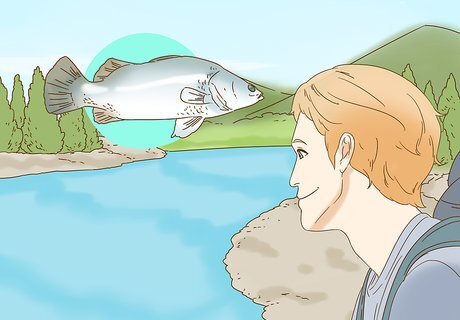
Find a river with a slow, continuous flow to catch freshwater barramundi. Barramundi are especially common in rivers and creeks with large catchments. They typically prefer water temperatures of above 20 °C (68 °F). Anglers tend to have the best luck catching barramundi in areas 25–75 kilometres (25,000–75,000 m) upstream from the ocean, in the transition zone between salt and fresh water. You can troll for barramundi from a boat or try to catch them from the shore. The average length of a mature barramundi ranges from 65–125 centimetres (26–49 in). Barramundi change sex from male to female during their lifespan, usually around the time they reach 90 centimetres (35 in) in length, so most barramundi over 100 centimetres (39 in) are female.

Go fishing in the early evening or at night. Barramundi typically feed during the night, so that’s when they’ll be biting. You’ll have the best luck around sunset. Listen for barramundi splashing at around sunset as they begin to feed on the surface of the water. Be sure to take extra precautions when fishing at night. Ask someone to go with you and let a friend or family member know where you’ll be going and when you plan to return. Take flashlights and insect repellant. Avoid fishing in areas that crocodiles are known to frequent.
Choosing a Rod and Bait

Use a short fishing rod around 6 feet (1.8 m) in length for accuracy. Accuracy is important when you’re fishing around submerged trees and structures. Shorter rods allow for more accuracy than long rods. Using a long rod will probably mean more lost lures if you’re fishing around snags.

Put a leader or trace on the end of your line that will resist abrasion. Having a leader or trace on the end of your line will protect it from snags and the barramundi’s sharp gill rakes. A thin monofilament (mono) line or braided line won’t be tough enough to do the job. If you’re just using a lure, you may have luck with a steel trace. Opt mono if you’re using live bait. Choose fishing line with a break strength of between 20–30 pounds (9.1–13.6 kg) when fishing for barramundi.
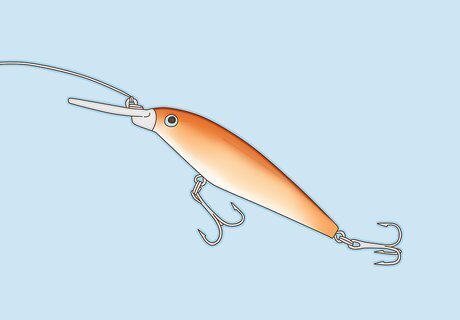
Choose a large, 5–6 in (13–15 cm) long minnow pattern lure. The barramundi is a carnivore that feeds on smaller fish and crustaceans, and will see a minnow lure as an attractive treat. Try a lure that is bright metallic gold or bronze. If you’re not having luck with minnow lures, try switching your lures to see what works best. If you’re fishing in an area with a lot of water lilies, for example, you might want to try using a small frog lure. Anglers have also had luck using surface popper lures, which simulate the movement of mullet. Also, try a variety of minnow lures of different sizes and colors.

Try using small prawns and mullets as live bait. If you’re not having any luck with lures, you might have better results with live bait. Barramundi feed on small fish and crustaceans, so you’ll have the best results with mullet and small prawns. Cherabin, or giant river prawn, are the most popular type of live bait for barramundi anglers.
Casting and Reeling In
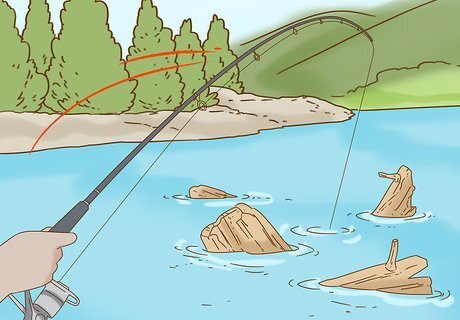
Cast around rock ledges, submerged logs, and other structures. Barramundi tend to hang around snags where they can find lots of smaller fish and crustaceans to prey upon. Barramundi especially like to gather around mangrove roots. You may also have luck fishing in deep holes or at intersections of different flows of water.
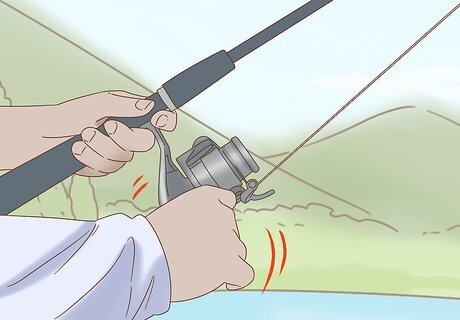
Reel your line in slowly. Barramundi don’t usually chase fast moving lures. A good rule of thumb is to start by reeling in your line at a speed of 1 hand crank revolution per 1 second. While you want to reel in slowly, make sure you still reel in at a speed that’s fast enough for your lure’s swimming action to work. You might also want to try varying the speed of your retrieval. As you reel in, twitch your rod occasionally to catch the attention of nearby barramundi.
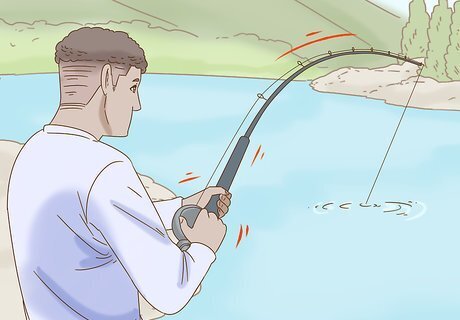
Maintain tension on the line after hooking a barramundi. Reel in your line and pull your rod so that there is no slack in your line. The tough mouth of the barramundi can make it difficult for the fishing hook to penetrate the mouth. Releasing tension on the line may allow the barramundi to spit out the hook.
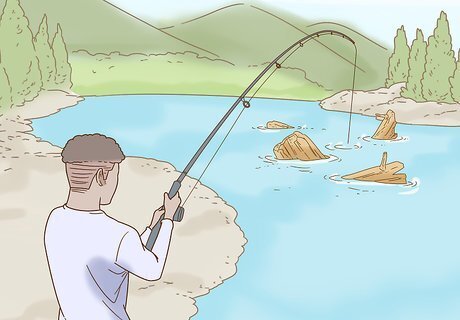
Be patient and don’t give up on a good fishing spot. Just because you don’t hook a barramundi right after casting out your line doesn’t mean barramundi aren’t around. You may need to tempt a barramundi several times before it decides to strike, so keep trying! There’s no set amount of time you should fish at a location before giving up. Before giving up, however, try a variety of lures and live bait and alter your reeling-in speed.

















Comments
0 comment